 |
|

Voronezh State University » Divisions & Departments » Botanical Garden
Departments
- Faculties
- Libraries
- Museums
- Botanical Garden
- Laboratories
| About Us |
| Study |
| Divisions & Departments |
| Research |
| Collaboration |
| VSU prospectus |
B.M. Kozo-Polyansky Botanical Garden
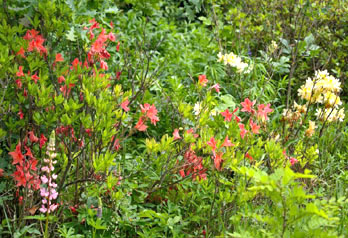 Address: 1 Universitetskaya pl., Voronezh, 394018, Russia
Address: 1 Universitetskaya pl., Voronezh, 394018, Russia
Tel: +7 (473) 220-88-52; +7 (473) 239-92-81
E-mail: deanery@bio.vsu.ru
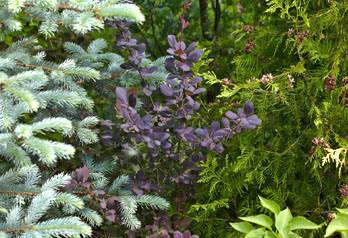 VSU Botanical Garden was founded in 1937. It is the only research institution in the Central Black Earth Region that specialises in such areas as plant introduction, finding and studying commercially valuable species, conservation and enrichment of the regional and world flora, and developing a scientific basis for efficient use and conservation of plant resources.
VSU Botanical Garden was founded in 1937. It is the only research institution in the Central Black Earth Region that specialises in such areas as plant introduction, finding and studying commercially valuable species, conservation and enrichment of the regional and world flora, and developing a scientific basis for efficient use and conservation of plant resources.
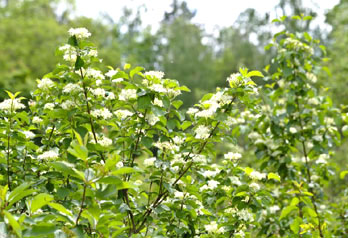 The Botanical Garden was founded by VSU professor B.M. Kozo-Polyansky, one of the world’s leading botanists, Associate Member of the USSR Academy of Sciences. Many prominent scholars, such as R.E. Levina, B.N. Zamyatin, S.V. Golitsyn, F.S. Marfin, I.A. Rutskyi, etc., also worked at the Garden. Among its former directors were prof. S.I. Mashkin, prof. A.N. Kireichev, prof. I.P. Arkhangelsky, prof. E.A. Nikolayev. Today the Director of the Garden is prof.D.I. Shcheglov.
The Botanical Garden was founded by VSU professor B.M. Kozo-Polyansky, one of the world’s leading botanists, Associate Member of the USSR Academy of Sciences. Many prominent scholars, such as R.E. Levina, B.N. Zamyatin, S.V. Golitsyn, F.S. Marfin, I.A. Rutskyi, etc., also worked at the Garden. Among its former directors were prof. S.I. Mashkin, prof. A.N. Kireichev, prof. I.P. Arkhangelsky, prof. E.A. Nikolayev. Today the Director of the Garden is prof.D.I. Shcheglov.
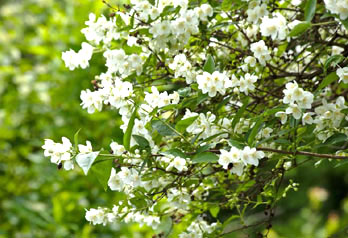 VSU Botanical Garden houses one of the largest collections of live plants in the Region containing tree and shrub vegetation, ornamental grass, and over 5000 taxons. The 11-hectare dendrologic garden includes over 700 species, varieties and samples from all over the world. Among the most interesting ones are chalk pine (Pinus cretacea), Canadian hemlock (Tsuga canadensis), subalpine fir (Abies lasiocarpa), Siberian Larch (Larix sibirica), Douglas fir (Pseudotsuga menziesii), black spruce (Picea mariana), Pacific redcedar (Thuja plicata), evergreen coniferous tree (Thuja occidentalis), Picea pungens and its varieties (blue spruce, white spruce, green spruce), etc.
VSU Botanical Garden houses one of the largest collections of live plants in the Region containing tree and shrub vegetation, ornamental grass, and over 5000 taxons. The 11-hectare dendrologic garden includes over 700 species, varieties and samples from all over the world. Among the most interesting ones are chalk pine (Pinus cretacea), Canadian hemlock (Tsuga canadensis), subalpine fir (Abies lasiocarpa), Siberian Larch (Larix sibirica), Douglas fir (Pseudotsuga menziesii), black spruce (Picea mariana), Pacific redcedar (Thuja plicata), evergreen coniferous tree (Thuja occidentalis), Picea pungens and its varieties (blue spruce, white spruce, green spruce), etc.
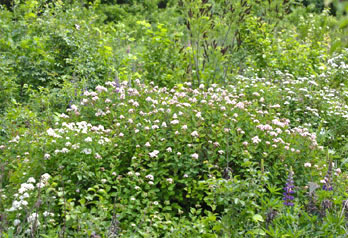 Some of the most beautiful plants are Rhododendrons of the Ericaceae family. Spring-summer green species show their beauty in autumn, while the evergreen plants – all year round. They are of various colours, but the most common are pink and lilac (Rhododendron adamsii, Rhododendron dauricum, Rhododéndron pónticum). Some have white flowers (Rhododéndron caucásicum, Rhododendron ungernii, Rhododendron tschonoskii), whilst Rhododendron luteum and Rhododéndron auréum have yellow flowers. Bruckenthalia, Pieris, Zenobia, Ledum, Lyonia and Eria have been introduced for the first time.
Some of the most beautiful plants are Rhododendrons of the Ericaceae family. Spring-summer green species show their beauty in autumn, while the evergreen plants – all year round. They are of various colours, but the most common are pink and lilac (Rhododendron adamsii, Rhododendron dauricum, Rhododéndron pónticum). Some have white flowers (Rhododéndron caucásicum, Rhododendron ungernii, Rhododendron tschonoskii), whilst Rhododendron luteum and Rhododéndron auréum have yellow flowers. Bruckenthalia, Pieris, Zenobia, Ledum, Lyonia and Eria have been introduced for the first time.
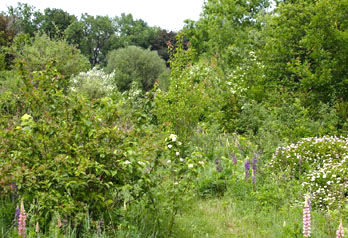 The decorative grasses collection (the largest in the Central Black Earth Region) includes over 1000 species. There are wonderful samples of Iris, Narcissus, Muscari, Ornithogalum, Eremurus, Tulips, Lilium, Crocus, Allium, etc.
The decorative grasses collection (the largest in the Central Black Earth Region) includes over 1000 species. There are wonderful samples of Iris, Narcissus, Muscari, Ornithogalum, Eremurus, Tulips, Lilium, Crocus, Allium, etc.
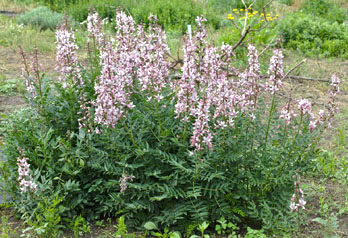 The Central Black Earth Region systematic plant area containing about 1000 species, over 200 of which are classified as rare has been restored recently. The most beautiful are the following species of ornamental plants: Daphne Julia, Daphne Sophia, Adonis vernalis, Andrósace koso-poljanskii, Schiveréckia podólica, Dictamnus gymnostylis, Fritillaria, Lilium martagon, Paeonia tenuifolia, Platanthéra bifólia, Bellevalia sarmatica, Cephalāria litvinōvii, and Túlipa schrénkii.
The Central Black Earth Region systematic plant area containing about 1000 species, over 200 of which are classified as rare has been restored recently. The most beautiful are the following species of ornamental plants: Daphne Julia, Daphne Sophia, Adonis vernalis, Andrósace koso-poljanskii, Schiveréckia podólica, Dictamnus gymnostylis, Fritillaria, Lilium martagon, Paeonia tenuifolia, Platanthéra bifólia, Bellevalia sarmatica, Cephalāria litvinōvii, and Túlipa schrénkii.
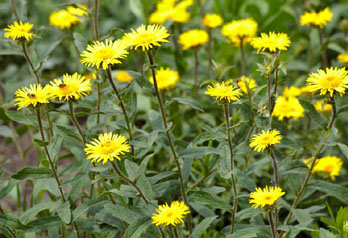 Today the Botanical Garden is working on the collections of Medicinal plants, rare plants, plants of Ericaceae family, Araliaceae family, and the Magnolia family, etc. A lot of attention has been paid to building up the collection of tropical and subtropical plants in the Garden's greenhouses. Here we can see plants from the Amazon rainforests, Mexican deserts, rainforests of South America and Madagascar, as well as monsoon forests of Southeast Asia and the Himalayas. 450 of these species are flowering and ornamental plants. The bromeliads' rosettes look like bowls and vases. Of greatest beauty are Cyclamens, Passifloras, Clerodendrums, and Zantedeschias in winter, when they are in full blossom; wonderfully green are various ferns, cypresses and palm trees. There we can also see ripening lemons, papayas, figs, coffee berries, and bananas. Banana plants grow really fast. Flowers and fruits appear after 8–10 months. This largest herbaceous flowering plant is often called “Bread of the Tropics”. The fruit can be eaten raw or cooked. They are used to make flour, syrup and jelly.
Today the Botanical Garden is working on the collections of Medicinal plants, rare plants, plants of Ericaceae family, Araliaceae family, and the Magnolia family, etc. A lot of attention has been paid to building up the collection of tropical and subtropical plants in the Garden's greenhouses. Here we can see plants from the Amazon rainforests, Mexican deserts, rainforests of South America and Madagascar, as well as monsoon forests of Southeast Asia and the Himalayas. 450 of these species are flowering and ornamental plants. The bromeliads' rosettes look like bowls and vases. Of greatest beauty are Cyclamens, Passifloras, Clerodendrums, and Zantedeschias in winter, when they are in full blossom; wonderfully green are various ferns, cypresses and palm trees. There we can also see ripening lemons, papayas, figs, coffee berries, and bananas. Banana plants grow really fast. Flowers and fruits appear after 8–10 months. This largest herbaceous flowering plant is often called “Bread of the Tropics”. The fruit can be eaten raw or cooked. They are used to make flour, syrup and jelly.
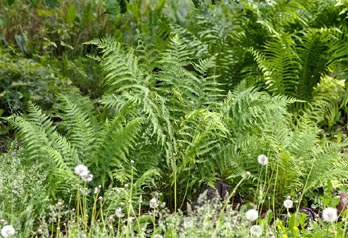 Many of the Garden's plants are food and spice plants (banana, papaya, vanilla, or cardamom); others serve as raw materials for industries (Agave varieties and fig trees) or are used for producing medicine (Myrtus, Cyclamens, Alocasias, Passifloras, etc.). Apart from restoring and making new collections of plants, a new administration office, a greenhouse complex, and a seed storehouse have been built.
Many of the Garden's plants are food and spice plants (banana, papaya, vanilla, or cardamom); others serve as raw materials for industries (Agave varieties and fig trees) or are used for producing medicine (Myrtus, Cyclamens, Alocasias, Passifloras, etc.). Apart from restoring and making new collections of plants, a new administration office, a greenhouse complex, and a seed storehouse have been built.
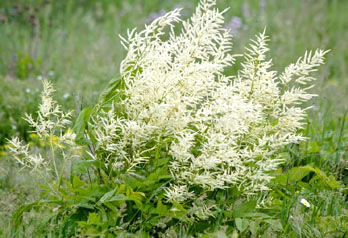 The Botanical Garden is a research, conservation, and educational centre. Its exhibits serve as unique material for scientific studies. A lot of students, post-graduate students, teachers, and researchers base their thesis, PhD and DSc studies on the material they get at the Garden. Students from other Voronezh universities and colleges come here to study. The Garden's researchers and members of the Faculty of Biology and Soil Sciences have for many years been carrying out research in biology, entomology, soil studies, genetics and plant selection, using different methods and technologies. The Garden has links with various universities and botanical gardens in Russia, CIS and all over the world.
The Botanical Garden is a research, conservation, and educational centre. Its exhibits serve as unique material for scientific studies. A lot of students, post-graduate students, teachers, and researchers base their thesis, PhD and DSc studies on the material they get at the Garden. Students from other Voronezh universities and colleges come here to study. The Garden's researchers and members of the Faculty of Biology and Soil Sciences have for many years been carrying out research in biology, entomology, soil studies, genetics and plant selection, using different methods and technologies. The Garden has links with various universities and botanical gardens in Russia, CIS and all over the world.
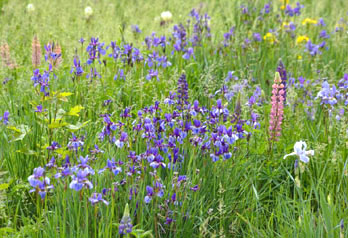 Dozens of new plants have been artificially selected at the Garden. The Garden has also given out about 5 million plants to various industries and amateur gardeners. About 600 000 plants have been sent to various parts of Russia. The Garden is open to visitors and people can go on a guided tour, or consult with a specialist. The Garden staff are often invited to lecture on radio and TV. There are also landscape design courses at the Garden.
Dozens of new plants have been artificially selected at the Garden. The Garden has also given out about 5 million plants to various industries and amateur gardeners. About 600 000 plants have been sent to various parts of Russia. The Garden is open to visitors and people can go on a guided tour, or consult with a specialist. The Garden staff are often invited to lecture on radio and TV. There are also landscape design courses at the Garden.

